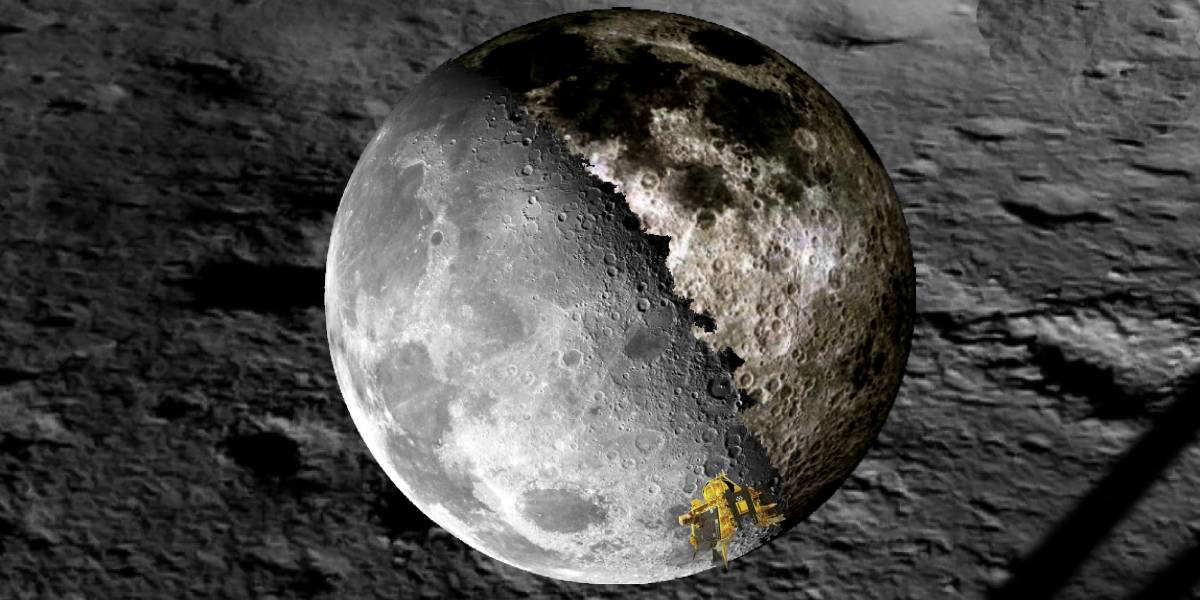India made history as ISRO’s ambitious third Moon mission’s Lander Module became the first to reach the South Pole of Earth’s only natural satellite.

This area has a special advantage because it doesn't get as much sunlight as other parts. (Representational Image)
On Wednesday, 23 August, India scripted history as the Lander Module (LM) of the ambitious third Moon mission of the Indian Space Research Organisation (ISRO), Chandrayaan-3, touched down on the lunar surface.
This made India the fourth country to accomplish the feat, and the first to reach the uncharted ‘south pole’ of Earth’s only natural satellite.
The LM touched down in the South Pole region where the surface is “very uneven” and “full of craters and boulders”.
India’s second lunar mission, which also attempted to soft-land there in 2019, was unsuccessful: Its lander and rover were destroyed, though its orbiter survived.
So, why ISRO did attempt to land on the South Pole of the Moon?
Imagine the Moon as a big ball. Now, this ball has two special spots at the top and bottom, which we call the North Pole and the South Pole, just like Earth does. When we talk about the South Pole of the Moon, we mean the bottom part.
So, why are scientists so interested in this South Pole? Well, think about it like this: When the Sun shines on the Moon, some parts get a lot of sunlight, and some parts don’t get much at all. The South Pole is one of those places that doesn’t get as much sunlight as the other parts.
This lack of sunlight means that there might be interesting things as-yet unexplored or undiscovered under the surface, like water.
Water is super important, and if we find it on the Moon, it could help us when we want to visit or even stay there for a while.
The ISRO focused its attention on getting closer to the South Pole of the Moon, at about 70 degrees from the top. This area has a special advantage because it doesn’t get as much sunlight as other parts.
The fact that it’s not very well lit by the Sun is actually a good thing for scientists. This dimmer lighting means the temperatures are lower, which means compounds like water can be found in ice form if they are really there.
“We have gone closer to the South Pole, which is almost 70 degrees (latitude). So, the South Pole has a special advantage with respect to being less illuminated by the Sun. And because of that, there is a potential to have more scientific content in terms of retention of water below the subsurface and also elemental composition and other activities, which is an electrical activity on the surface of the Moon to be more dominant there than what it is there at the equator,” said ISRO chief S Somanath.
Why does this matter? People who study space are very excited about exploring and learning more. They want to understand as much as they can.
One day, we might want to send people to live on the Moon and conduct excursions even farther into space. The South Pole of the Moon seems like a great place to start because it could hold a lot of secrets and valuable information.
“So science, people who are scientists who are working on the moon has really shown a lot of interest from the South Pole because ultimately human beings want to go and create colonies on the moon and then travel beyond. So the best place is something that we are looking for. So South Pole has the potential to be that,” said S Somanath.

Jul 10, 2024

May 27, 2024

May 15, 2024

May 02, 2024

Apr 29, 2024

Apr 29, 2024